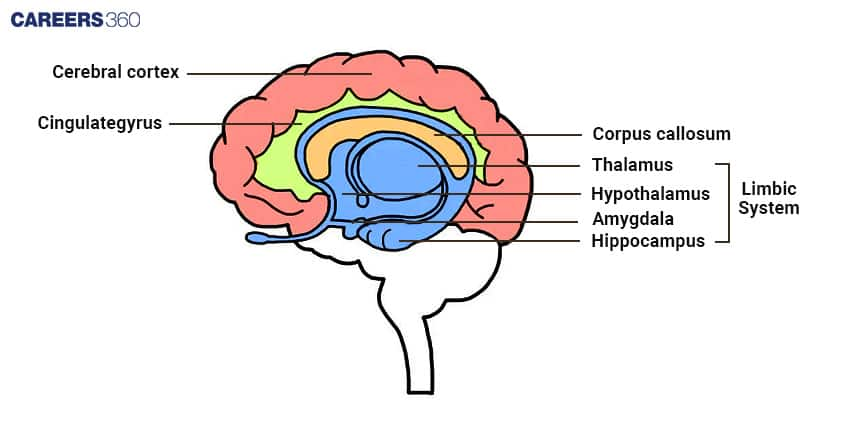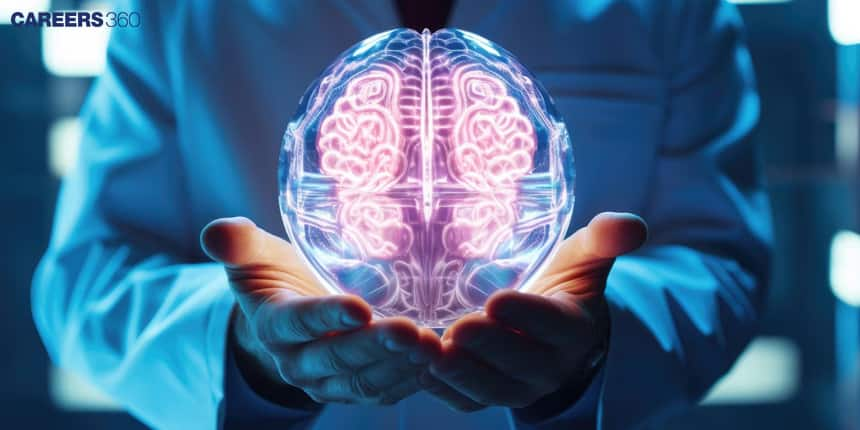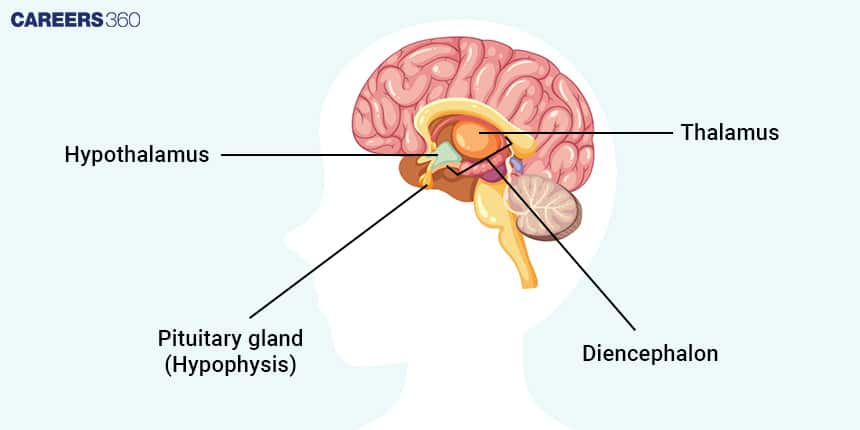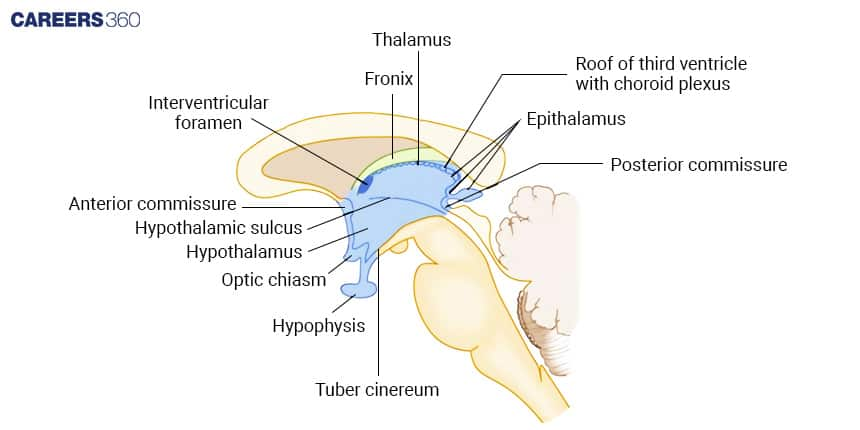Forebrain: Definition, Function, Structures, Diagram, Facts, FAQs, Parts
What Is Forebrain?
The forebrain is the largest and most complicated portion of the human brain. The structures of the forebrain participate in running our day-to-day life. It facilitates high mental functions, sensory perception, and voluntary motor activity.
Diagram: Structure of Forebrain

Forebrain Structure
It consists of the structures of cerebrum, thalamus and the hypothalamus.
Cerebrum
The division into two hemispheres and four lobes: frontal, parietal, temporal and occipital.
NEET 2025: Mock Test Series | Syllabus | High Scoring Topics | PYQs
NEET Important PYQ's Subject wise: Physics | Chemistry | Biology
New: Meet Careers360 B.Tech/NEET Experts in your City | Book your Seat now
- What Is Forebrain?
- Forebrain Structure
- Division Of The Forebrain
- Functions Of The Forebrain
- Basal Ganglia
- Recommended video on Forebrain

Thalamus
The thalamus acts as a relay station. It is associated with the conduction of sensory and motor signs to the cerebral cortex.
It takes part in the regulation of consciousness, sleep, and alertness
Hypothalamus
The hypothalamus is also concerned with significant homeostasis. It controls the body temperature, hunger, thirst, sleep, and wakefulness
It controls a pituitary gland that, in turn, controls the secretion of hormones
Division Of The Forebrain
The forebrain divides into the diencephalon and telencephalon
Diencephalon
Interposed between the telencephalon and midbrain, the diencephalon comprises the thalamus, hypothalamus epithalamus, and subthalamus. It forms in the third week of embryonic development from the neural tube.
Diagram: Structure of Diencephalon

Structures Of Diencephalon
Thalamus: A large grey matter structure that relays sensory information to the cerebral cortex and regulates alertness, sleep, and consciousness.
Hypothalamus: The hypothalamus is the portion of the brain lying just underneath the thalamus. The pituitary acts at the interface between the nervous and endocrine systems. These processes it controls, therefore, range from metabolic processes to hunger, thirst, sleep, fatigue, and circadian rhythm.
Epithalamus: A small structure rather located at the dorsal part of the diencephalic region of the brain, consisting of the habenular commissure, habenular nuclei, stria medullaris, and pineal gland producing melatonin and hormones that modulate emotion and conserve energy.
Subthalamus: It is that part of the diencephalon which lies ventrally to the thalamus and laterally to the hypothalamus. It is composed of grey matter nuclei accompanied by the associated white matter structures.

Attachments To Diencephalon
The optic nerve is attached to the diencephalon. The optic nerve is associated with vision and light. The nerve stretches from the eye to the diencephalon all the way.
Telencephalon
The forebrain forms the cerebrum, which is the largest part of the brain.
It comprises the cerebral cortex, hippocampus, olfactory bulb, and basal ganglia.
It allows for voluntary movements that are possible with the help of the cerebellum.
Functions Of The Forebrain
It deals with higher-order functions of the central nervous system involving thought processes, planning, decision-making, and problem-solving.
It thus processes the information from sense organs about different parts of the body and coordinates voluntary movements.
Basal Ganglia
The basal ganglia comprise a group of nuclei linked to the regulation of voluntary motor movements, procedural learning, and habitual behaviours.
Through their influence on the activity in the thalamus, they modulate the coordination of movement and posture.
Points to Remember
It is in the forebrain that the most elevated and complicated functions of the brain are carried out: cognition and emotion.
In its turn, through the hypothalamus, it makes a huge impact on the internal environment of the body.
Thus, damage to the forebrain can be disastrous for cognition and sensation.
Conclusion
One of the most important parts of the human brain is the forebrain. It is mandated to perform higher cognitive functions, sensory perception, and homeostasis. Its anatomy, together with the numerous functions it carries out, details the abilities that the human brain has and why it is vital in daily life.
Recommended video on Forebrain
Frequently Asked Questions (FAQs)
Cerebrum, thalamus, and hypothalamus are present.
The thalamus relays sensory and motor signals to the cerebral cortex and participates in regulating consciousness, sleep, and alertness.
Controls body temperature, hunger, thirst, and circadian rhythm; it controls the secretion of hormones.
Basal ganglia have been associated with voluntary motor movements, procedural learning, routine behaviours, and coordination of movement and posture.
Therefore, damage to the forebrain can result in serious impairment of cognition and sensation—especially in thinking and planning, including sensory processing.
Also Read
30 Nov'24 10:55 AM
29 Nov'24 08:48 PM
29 Nov'24 06:52 PM
29 Nov'24 05:35 PM